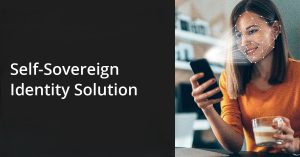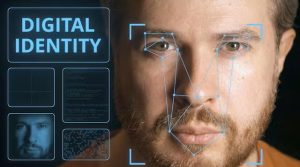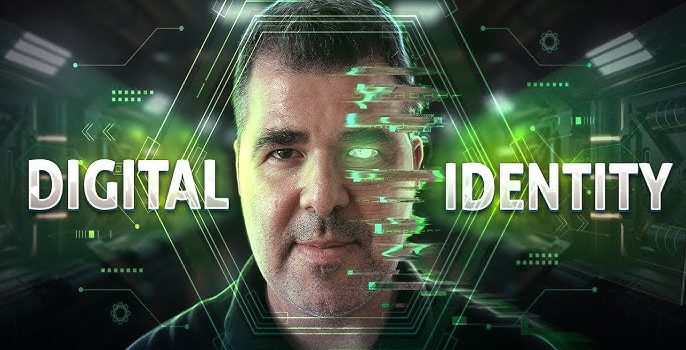
Introduction
The online world continues to expand in 2025, making digital identity a key factor in our daily lives. We shop, learn, and even handle official paperwork on the internet, all of which demands a verified online presence. Whether you’re applying for a job through a company’s website or logging into a social media platform, you have to prove you are who you say you are. Yet, with the growing number of accounts we manage, it’s easy to feel lost in this virtual sea of logins and passwords.
Technology now offers new ways to confirm a user’s identity, ranging from simple two-factor authentication to advanced biometric verification. At the same time, the quest for data privacy intensifies. People want convenient digital interactions without risking personal information. In this article, we will explore the evolving landscape of online identification, the rise of decentralized identity, and practical strategies to secure your digital identity while preserving user-friendly experiences.
What Is Digital Identity?

A digital identity is the collection of data that connects you, as a unique person, to your online profiles. It includes your usernames, passwords, email addresses, and sometimes more sensitive details like your birthdate or biometrics. Each time you interact with a website, app, or connected device, you either build or confirm this identity.
Yet, a verified online presence goes beyond personal details you can type in a form. Platforms increasingly require proof you are not a robot or an impostor. This proof might be a security code sent to your phone, or it might be an ID scan compared to your face in real time. In a digital society, such checks help ensure trust between strangers. When you apply for remote jobs, open a digital bank account, or join specialized online communities, robust verification methods validate your identity and, in turn, protect the integrity of the platform.
The Rise of Self-Sovereign Identity Solutions

One of the hottest concepts in digital identity is self-sovereign identity, often abbreviated as SSI. In this model, you have full control over your identifying information, such as your name, date of birth, or official documents. Instead of uploading these documents to countless sites, you maintain them in a secure digital wallet and present only the details required to prove eligibility or identity. Using cryptographic proofs, you can show that you meet certain conditions without revealing extra data.
For example, if a website only needs to confirm you’re over 18, an SSI tool might generate a “Yes/No” response based on your birthdate, rather than showing your actual birth year. This approach lessens the chance of your data being leaked or abused. While still in the early stages, self-sovereign identity systems promise to transform how we manage our verified online presence. They also align with global privacy regulations, giving everyday users the power to limit data collection.
What Lies Ahead for Digital Identity

By 2025, many experts expect more widespread use of decentralized identity solutions across various industries, including healthcare, finance, and e-governance. You may handle formal procedures, like renewing licenses or accessing medical records, without stepping into an office. Instead, you’d use secure digital credentials verified by official bodies. Biometric tools could become standard for remote identity checks, diminishing the need for in-person appointments.
At the same time, technology like artificial intelligence aims to verify data faster and more accurately. Some AI-driven systems evaluate facial expressions or typing patterns to detect anomalies. These tools can close security gaps that manual checks often miss. Meanwhile, laws surrounding data privacy might tighten, pushing companies to adopt more user-centric approaches. This shift could bring increased trust but also stricter penalties for organizations that fail to safeguard personal data.
Staying informed about these advancements helps you adapt, whether you’re a business leader crafting digital tools or a consumer who wants a more secure online presence. The identity space will likely evolve, but its central goal remains the same: to deliver convenient, secure ways for people to be recognized online.
Data Privacy and Security Considerations

At the heart of digital identity lies data privacy. When you share sensitive details, you want to be sure they won’t appear on shady marketplaces or get misused by unauthorized parties. The more we depend on online services, the more important it is to secure these details. Many platforms adopt end-to-end encryption to protect data in transit, but your identity details might still be stored somewhere, waiting for potential threats.
Regulations like the GDPR (General Data Protection Regulation) and other privacy laws in various regions encourage safer handling of personal information. In many cases, companies now have to notify users if a data breach has occurred. They also face steep fines for failing to keep records safe. As a user, it’s wise to limit how often you hand over personal data. This approach helps you take charge of your verified online presence without exposing every detail of your life.
Balancing convenience with safety is tricky. People want quick logins and simple checkouts, but also demand top-notch security. Advanced solutions like two-factor authentication, biometric verification, and decentralized storage let you enjoy both ease and confidence.
Tips for Maintaining a Secure Online Identity

Keeping a secure digital identity and enjoying a hassle-free online experience can be simpler if you adopt consistent routines. Upgrading to a strong password manager is a solid first step. By generating random, complex passwords, this tool spares you from reusing the same login across sites. It also frees your brain from memorizing endless strings of letters and numbers.
Enabling two-factor authentication remains an effective way to add a protective layer. Some services let you use authenticator apps, which offer more security than just receiving codes through text messages. If available, explore biometric authentication features to confirm your identity through face scans or fingerprints, as these approaches reduce reliance on insecure credentials.
Staying vigilant about emails and websites is equally important. If a message seems off, do not click links or download attachments. Check the sender’s address or use official websites. If you travel often or need to connect to random networks, a VPN helps to shield your data from lurking threats.
Lastly, remain cautious when granting apps or websites permissions to personal data. Think about whether a platform truly needs your location or contacts. Restricting access to only what is necessary keeps your online footprint smaller, thus making it harder for ill-intentioned actors to piece together your details.
Common Threats to Your Verified Online Presence

Even with smart tools, threats to your verified online presence persist. Phishing emails still trick users into revealing passwords. Some hackers develop malicious programs that can bypass basic security features. Others attempt identity theft by stealing your real-world documents and using them to create bogus online accounts.
Weak passwords make these attempts easier. If you use “123456” or “password,” it doesn’t take a genius to crack your login. Public Wi-Fi hotspots also create risk if they lack encryption. Unsecured connections let cybercriminals intercept your data, particularly when you log in to websites without proper protection. Once they gain access, they can manipulate your digital identity in ways you might not detect immediately.
Another concerning threat involves deepfakes and other advanced forgery methods. With improved editing software, impostors could mimic your face or voice. Platforms counteract these technologies with better biometric authentication tools, but staying alert to suspicious activity remains vital.
The Future of Digital Identity in 2025

The future of digital identity looks bright and full of promise. New technology like biometrics and blockchain may soon make it easier and safer to manage your online presence. These tools could provide better protection against fraud while being simple to use. In the coming years, digital identity systems are expected to blend advanced security with friendly design. This change will help people feel even more confident in their digital interactions. As technology evolves, the way we manage our online identities will continue to improve, making the digital world a safer place for everyone.
Comparative Table: Methods for Securing Digital Identity
| Security Method | Core Benefit | Level of Protection |
|---|---|---|
| Two-Factor Authentication | Adds a second step (e.g., SMS code) to logins | Medium, helps block weak attacks |
| Biometric Verification | Uses unique human traits like fingerprints | High, but depends on device tech |
| Decentralized Identity | Avoids single points of failure via blockchain | High, user controls their data |
| Password Managers | Stores complex passwords in encrypted vaults | Medium to High, simplifies logins |
| VPNs & Encrypted Networks | Conceals data traffic from prying eyes | Medium to High, crucial for public Wi-Fi |
Conclusion
Digital identity is rapidly transforming how we interact with online services. A verified online presence is more than just a username and password. It’s an evolving mix of biometric authentication, decentralized identity frameworks, and robust data privacy measures. From stronger passwords to self-sovereign identity, individuals hold more power to secure their personal details than ever. Knowing how to adopt new methods and navigate possible threats can protect your information while allowing hassle-free digital living. Embracing these tools now sets you on a path toward safer, more flexible interactions in the online world.










